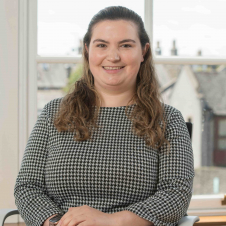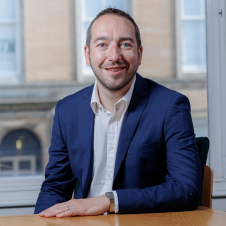In light of the latest Budgets in the UK, there are some key points to note when it comes to planning your personal taxes:
- The personal allowance (PA) is currently frozen at £12,570 until 5 April 2028 across the UK.
- In Scotland, there is a change in the top two income tax rates from 6 April 2023, meaning that the Scottish higher rate rises to 42%, and the top rate to 47% (see table one below).
- The additional rate threshold (called the top rate threshold in Scotland) falls from £150,000 to £125,140 from 6 April 2023 as it does throughout the UK. Note too, that £125,140 is the figure at which all PA is lost.
- In England, Wales, and Northern Ireland, the basic rate band is frozen at £37,700 until 5 April 2028 (see table two below). In Scotland this basic rate band applies to non-savings income only, with other income subject to Scottish rates of income tax. Once the basic rate band is exceeded it means that someone with the standard PA starts to pay higher rate tax on income above £50,270 until 2028.
- There is no change to tax rates in England, Wales and Northern Ireland in 2023/24.
Table one – Scottish Tax rates and bands
In Scotland, the income tax rates are:
| Band | Income | 2022/23 | 2023/24 |
|---|---|---|---|
| Starter | £12,571 to £14,732 | 19% | 19% |
| Basic | £14,733 to £25,688 | 20% | 20% |
| Intermediate | £25,689 to £43,662 | 21% | 21% |
| Higher | £43,663 to £150,000/£125,140 | 41% | 42% |
| Top | Above £150,000/£125,140 | 46% | 47% |
Table two - UK tax rates and bands 2022/23 & 2023/24
These rates apply to the UK, but in Scotland only on savings income:
| Band | Rest of UK rates of income tax | 2022/23 | 2023/24 |
|---|---|---|---|
| Basic | £12,571 to £50,270 | 20% | 20% |
| Higher | £43,663 to £150,000/£125,140 | 40% | 40% |
| Additional | Above £150,000/£125,140 | 45% | 45% |
Impact of recent announcements
The freezing of the PA and tax bands until 5 April 2028 represents a ‘stealth’ tax, because as wages rise, a bigger slice of income falls to be taxed. This will be particularly noticeable in a time of inflation. Freezing the PA and basic rate band, for example, will push more people into the higher rate tax band. There will be a similar effect in Scotland, where the tax burden for some individuals is already higher than for equivalent earners elsewhere in the UK. For Scottish taxpayers, it is also important to factor in the increase in the top two rates of tax.
Lowering the additional/top rate threshold at which someone starts to pay 45% income tax in the rest of the UK and 47% in Scotland will significantly increase the tax take from those on higher incomes. It is expected to bring around a quarter of a million more taxpayers into additional/top rate tax from 2023/24.
Top tip: managing the timing of your income
Where income is expected to be between £125,140 and £150,000 in 2023/24, bringing income into 2022/23 could mean the difference between being taxed at 40% in 2022/23, rather than being taxed at 45% in 2023/24; or between 41% and 47% in Scotland. Scottish taxpayers may also want to accelerate income to reduce the impact of the 1% rise to both the higher and top rates of income tax.
There are a variety of ways that this can be done. If you would like to discuss the options available for your circumstances, get in touch with our specialist Private Client team.
Making the most of your personal allowance
Everyone has a personal allowance (PA). Now that the PA has been frozen, it’s even more important to use the PAs available in your household to avoid them being wasted.
The standard PA is £12,570 throughout the UK. It can be higher if you are eligible for the Blind Person’s Allowance; or have an income less than the PA, and are eligible to make a transfer of what is called the Marriage Allowance to your spouse.
You start to lose the PA if you have what is called ‘adjusted net income’ over £100,000. Adjusted net income is, broadly speaking, total taxable income before personal allowances, but after some deductions such as Gift Aid. The PA is clawed back by £1 for every £2 of adjusted net income over £100,000. When income is £125,140 or more, all PA is lost.
Top tip: keeping the personal allowance
If you are in the £100,000 - £125,140 income bracket, planning to keep your taxable income below £100,000 can help you keep the PA. There are various ways to do this, including:
- Where one spouse is in a lower tax band, married couples may have opportunities to redistribute income, or transfer income-producing assets.
- There can be further planning potential if you are in business with your spouse. If you are in partnership, for example, it may be possible to review the profit-sharing ratio. If you are self-employed, increasing wages for a spouse who works in the business is another possibility, provided that this is commercially justifiable and reflects the underlying reality of the way your business is run.
- Consider making personal pension contributions or gift aid donations to charity.
It’s crucial to make sure that any arrangements you make here are fully compliant with relevant legislation, so we recommend consulting with one of our experts before taking any action – get in touch with the team here.
Read the next section of our tax planning guide: Director-shareholders or return to the main page.
View our other services
Arrange a free consultation with the team now
Have a general enquiry? Get in touch.


